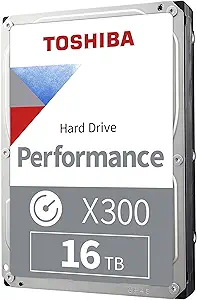80A SSR-Finger protected terminal(HHG1-3) Load type3PST-NO(3
N/O)ResistiveLoad current10A,20A,25A,30A,40A,60A or80ALoad
switching voltage24-240V, 40-480VMax. peak voltage900VSwitch
typeZero cross(std) or randomOn voltage drop V AC1.5VLeakage
current off mA≤ 7m ATurn-on voltageD:3VDC /A 90VACTurn
off voltageD:1VDC /A:10VACRemarks: 1.High load voltage -up to
480VAC 2.4~32VDC or 90~250VAC control voltage 3.Zero cross-over or
Random switching 4.LED input indicator 5.Finger protected
terminal 5.RoHS Compliant 6.UL pending Feature: No-contact relays
that semiconductor is utilized, which enables high-speed and
high-frequency operation. RoHS compliant. Models also available
with no zero cross. Replaceable power elements. Conforms to cULus
standards and CE standards What is SSR? Solid state relays
(SSRs) turn on or off the power being supplied to other devices, in
a similar prevailing as a mechanical switch. However, instead of
being switched by human interaction like a physical switch, SSRs
are switched electronically. With SSRs, you can control
high-current devices such as lights or appliances with low-current
signals, like a standard DC signal from a Digital Output. Most
SSRs will switch on with a voltage of 3V or higher. This makes them
perfect for use with Phidget Interface Kits, or any device with
a digital output. SSRs perform the same job as Mechanical
Relays, but have the following advantages: SSRs produce less
electromagnetic interference than mechanical relays during
operation. This is mostly due to the absence of a phenomenon
called contact arcing only present in mechanical relays,
where the physical contacts of the relay tend to spark internally
while switching. The reduced interference can also be attributed to
the fact that SSRs do not use electromagnets to switch. The switch
contacts of a mechanical relay will eventually wear down from
arcing. An SSR will have a longer life because its internals are
purely digital. Properly used, they will last for millions of
cycles. SSRs turn on and off faster than mechanical relays (1ms
compared to 10ms). SSRs are less susceptible to physical vibrations
than mechanical relays. Since the switch inside an SSR isn't a
mechanical switch, it does not suffer from contact
bounce and operates silently. How does it work? The
control inputs are connected internally to an LED, which shines
across an air gap to light sensors. The light sensor is connected
to the transistors which open or close, supplying the relay's load
with power. When a transistor is closed, current can flow
freely through the relay, causing the load and power supply to be
connected. When a transistor is open, almost all current is
blocked, causing the load to become disconnected from the power
supply. The pairing of an LED with light sensors is called an
optocoupler, and is a common technique to link two parts of a
circuit without a direct electrical connection. Why NCR &
Clion? 1. We Are an electronics components manufacturer,
researcher, developer and exporter. 2. We have fourteen years
experience of manufacturing Relays and other electronic components.
3. Based on ISO 9001 & ISO14000 quality control system as our
production standard;
4. We have completely sales service system, ensure every detail is going smooth.
5. We have new designed products each year by our R&D Department.
6. Perfect testing system ensure each product is qualified.
7. Want to know more of us?
Waiting for your inquiry. /* January 22, 2024
19:08:37 */!function(){function s(e,r){var
a,o={};try{e&&e.split(",").forEach(function(e,t){e&&(a=e.match(/(.*?):(.*)$/))&&1
Related products about 80A SSR-Finger Protected Terminal (HHG1-3)
-
 Waste Tyre Plastic Recycling Machinery Machine Tire Crusher Production Line Rubber Crumb Grinding Machine Equipment Tire Shredder
Waste Tyre Plastic Recycling Machinery Machine Tire Crusher Production Line Rubber Crumb Grinding Machine Equipment Tire Shredder
-
 Stretch Plastic Blowing Pet Bottle Making Blow Molding Machine Bottles Stretch Automatic Pet Bottle Blowing Machine
Stretch Plastic Blowing Pet Bottle Making Blow Molding Machine Bottles Stretch Automatic Pet Bottle Blowing Machine
-
 Waste Plastic Pet Bottle, Water Bottle Flake, PP/HDPE/LDPE PE Film Jumbo Woven Bags Plastic Crusher Machine, Plastic Crushing Washing Recycling Machine
Waste Plastic Pet Bottle, Water Bottle Flake, PP/HDPE/LDPE PE Film Jumbo Woven Bags Plastic Crusher Machine, Plastic Crushing Washing Recycling Machine
-
 Type 2 Wall-Mounted Electric Car Charging Station 7kw /11 Kwelectric Vehicle Charging Station Home Wallbox AC EV Charger Single Phase or 3three Phase
Type 2 Wall-Mounted Electric Car Charging Station 7kw /11 Kwelectric Vehicle Charging Station Home Wallbox AC EV Charger Single Phase or 3three Phase
-
 G-View G12W Wholesale Auto Car LED Headlight Bulb High Power H13 H11 9005 H7 H4 Car LED Headlights LED Car Lights
G-View G12W Wholesale Auto Car LED Headlight Bulb High Power H13 H11 9005 H7 H4 Car LED Headlights LED Car Lights
-
 New Design Porcelain Round Plates Dinner Set for Wedding and Banquet
New Design Porcelain Round Plates Dinner Set for Wedding and Banquet
-
 China 2023 New Design Super Soft 100% Polyester Microfiber Knitted Oversized Decoration Hoodie Blanket
China 2023 New Design Super Soft 100% Polyester Microfiber Knitted Oversized Decoration Hoodie Blanket
-
 Handmade Art Creative Materials Thickened White Paper Cup DIY Disposable Handmade Colored Paper Cup
Handmade Art Creative Materials Thickened White Paper Cup DIY Disposable Handmade Colored Paper Cup






